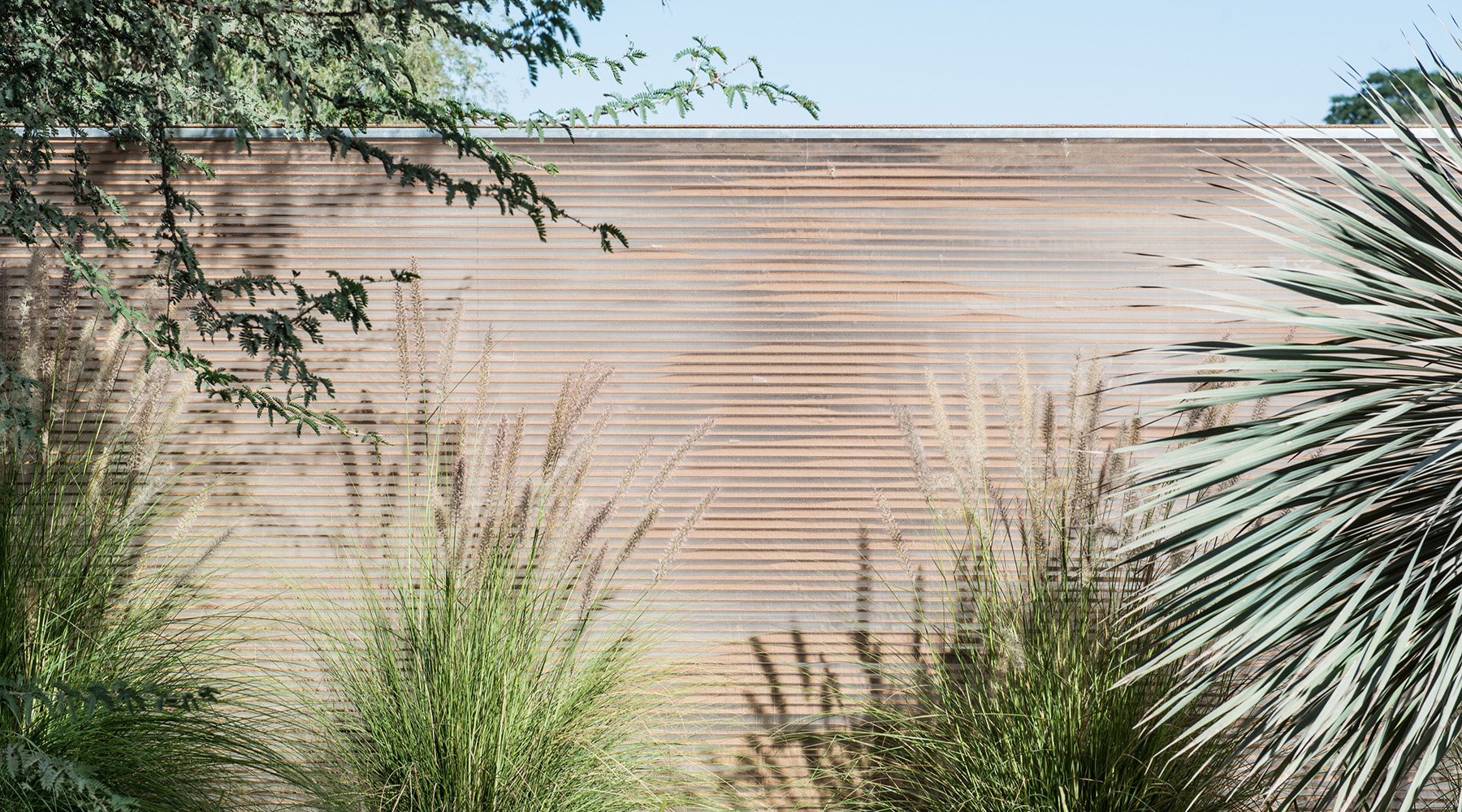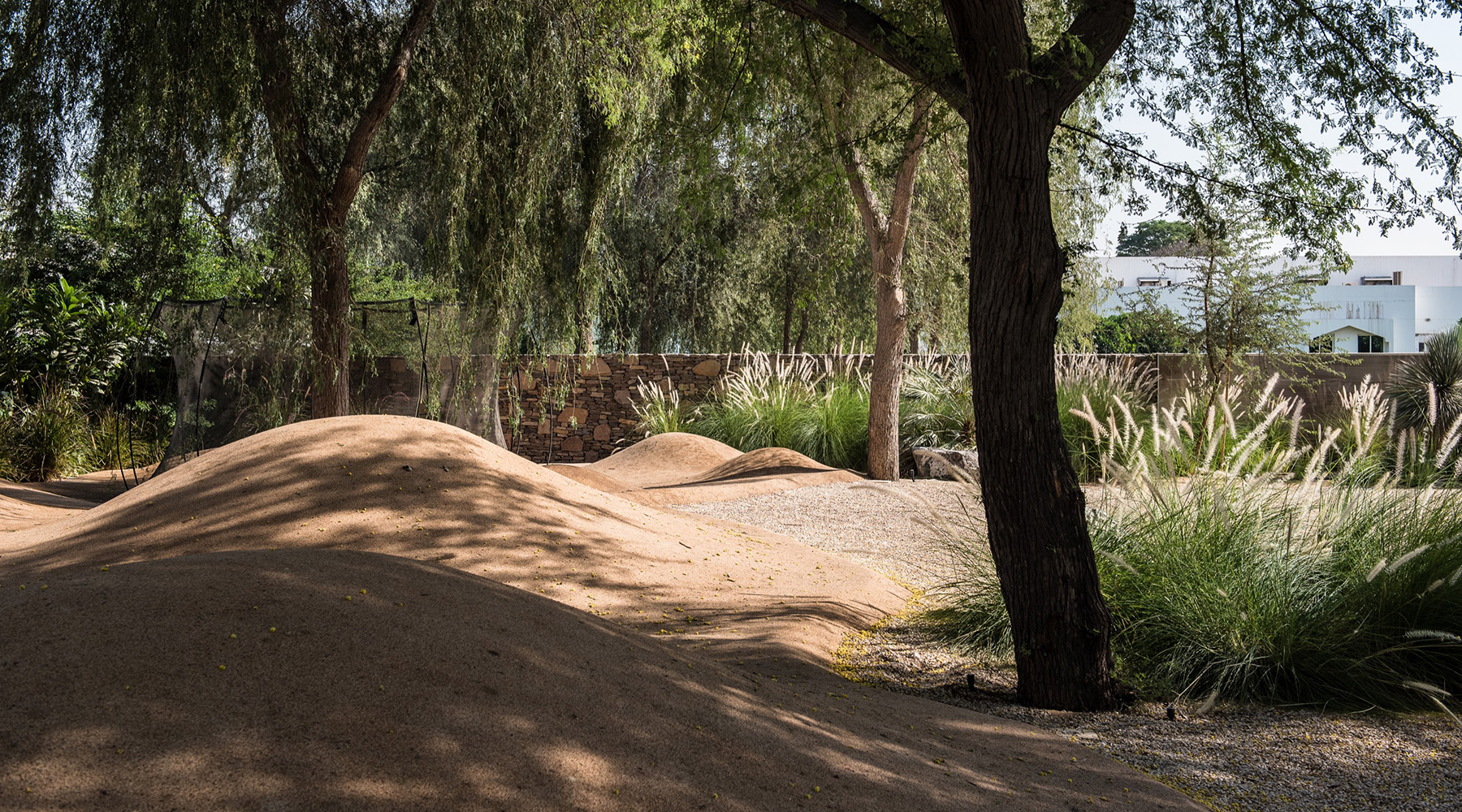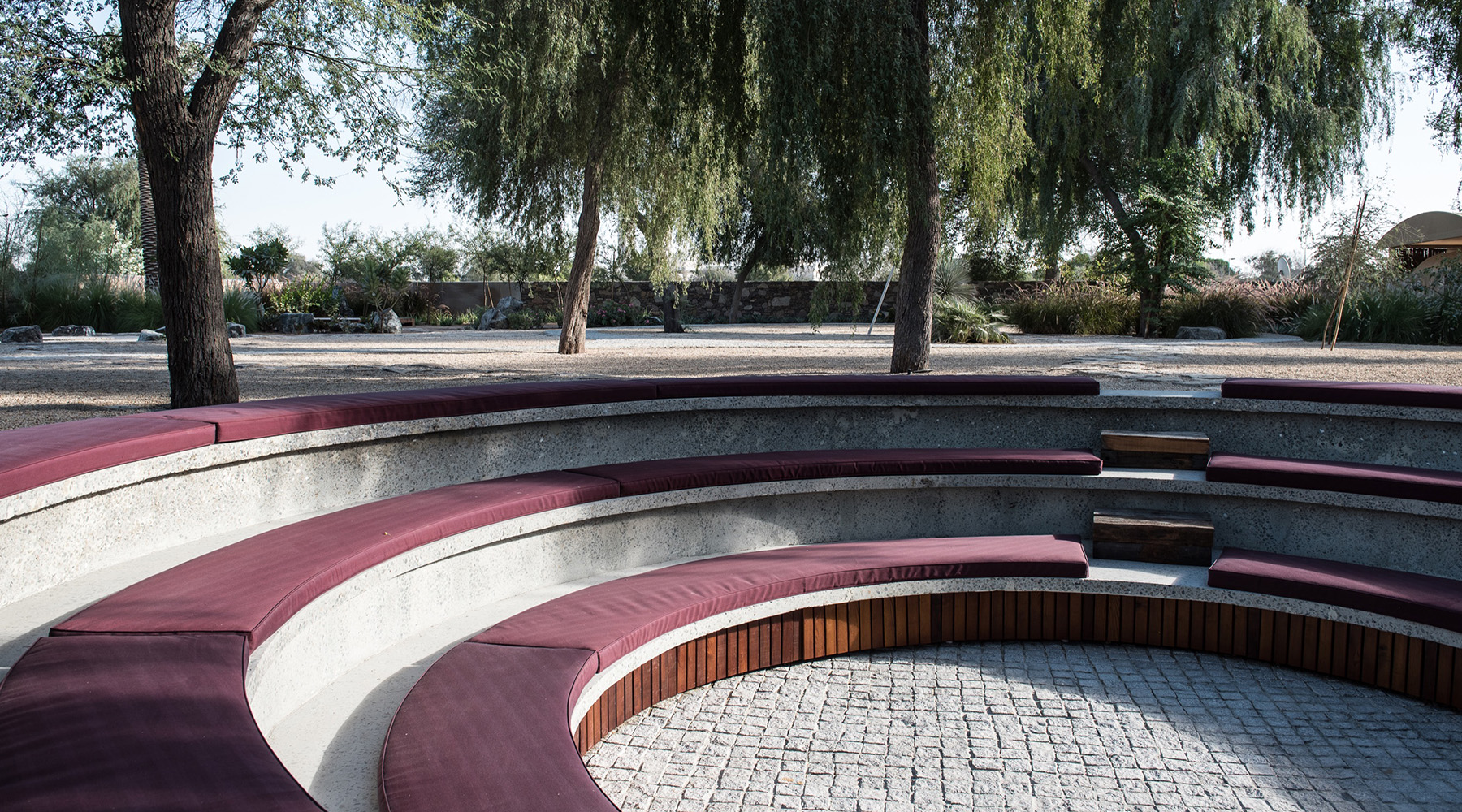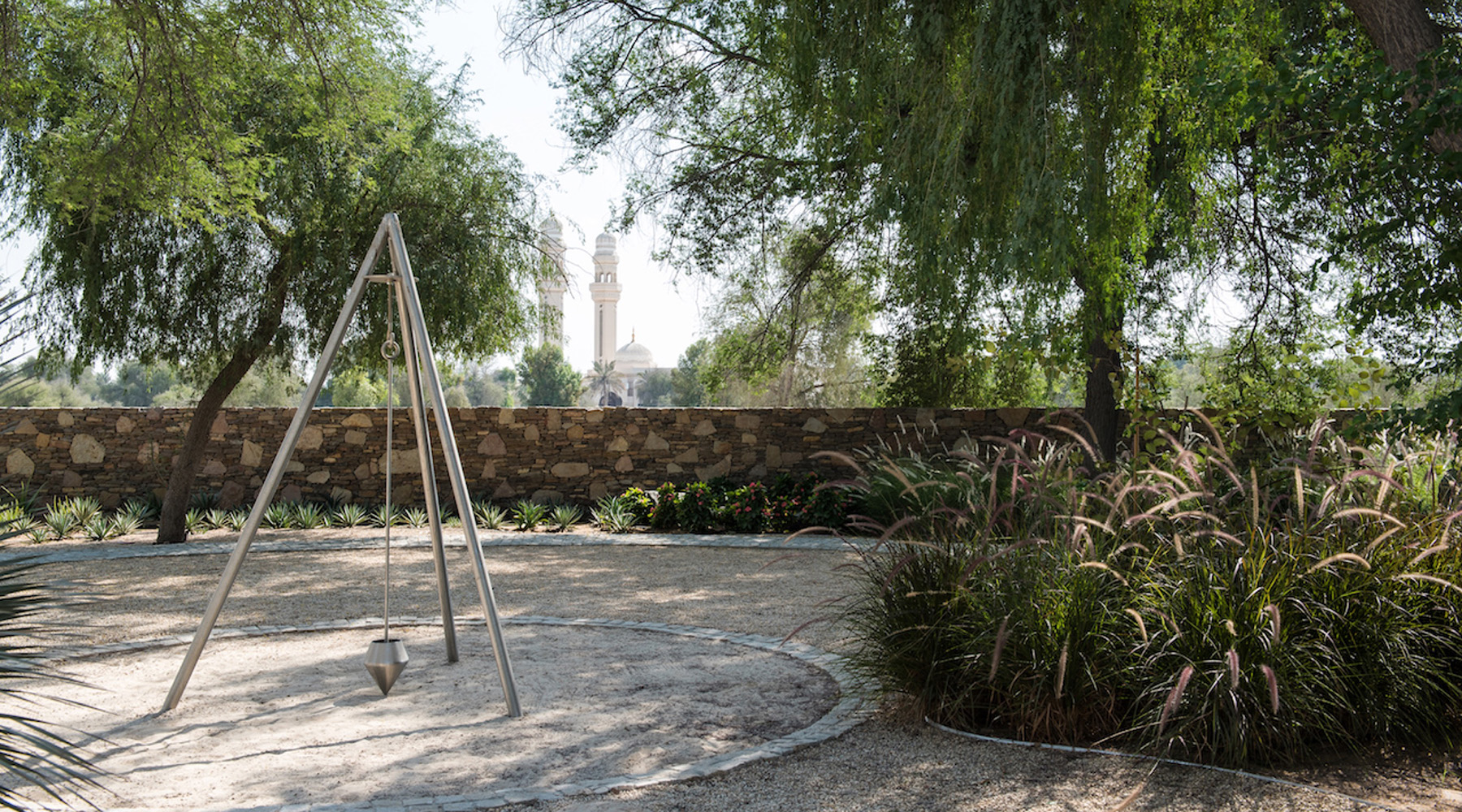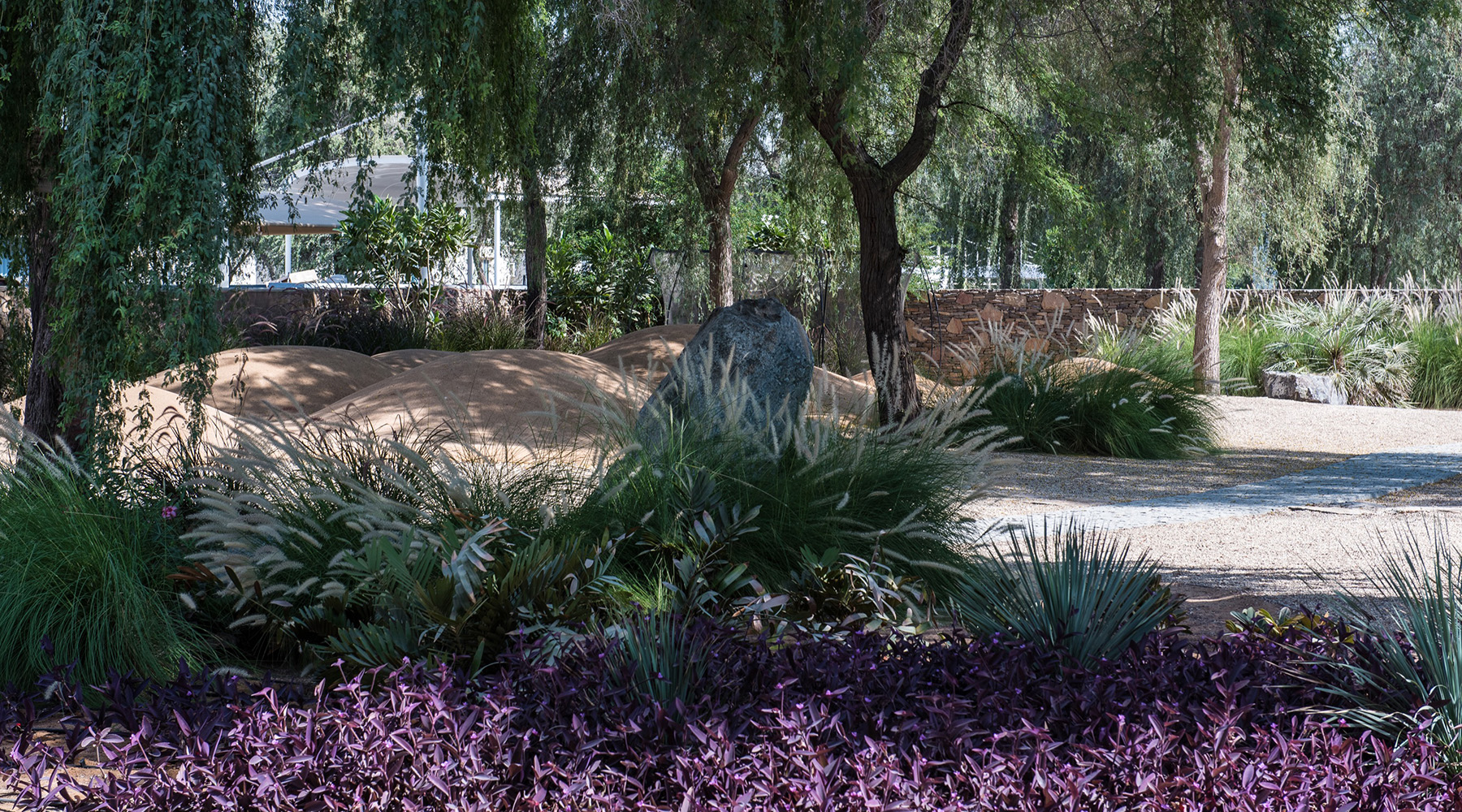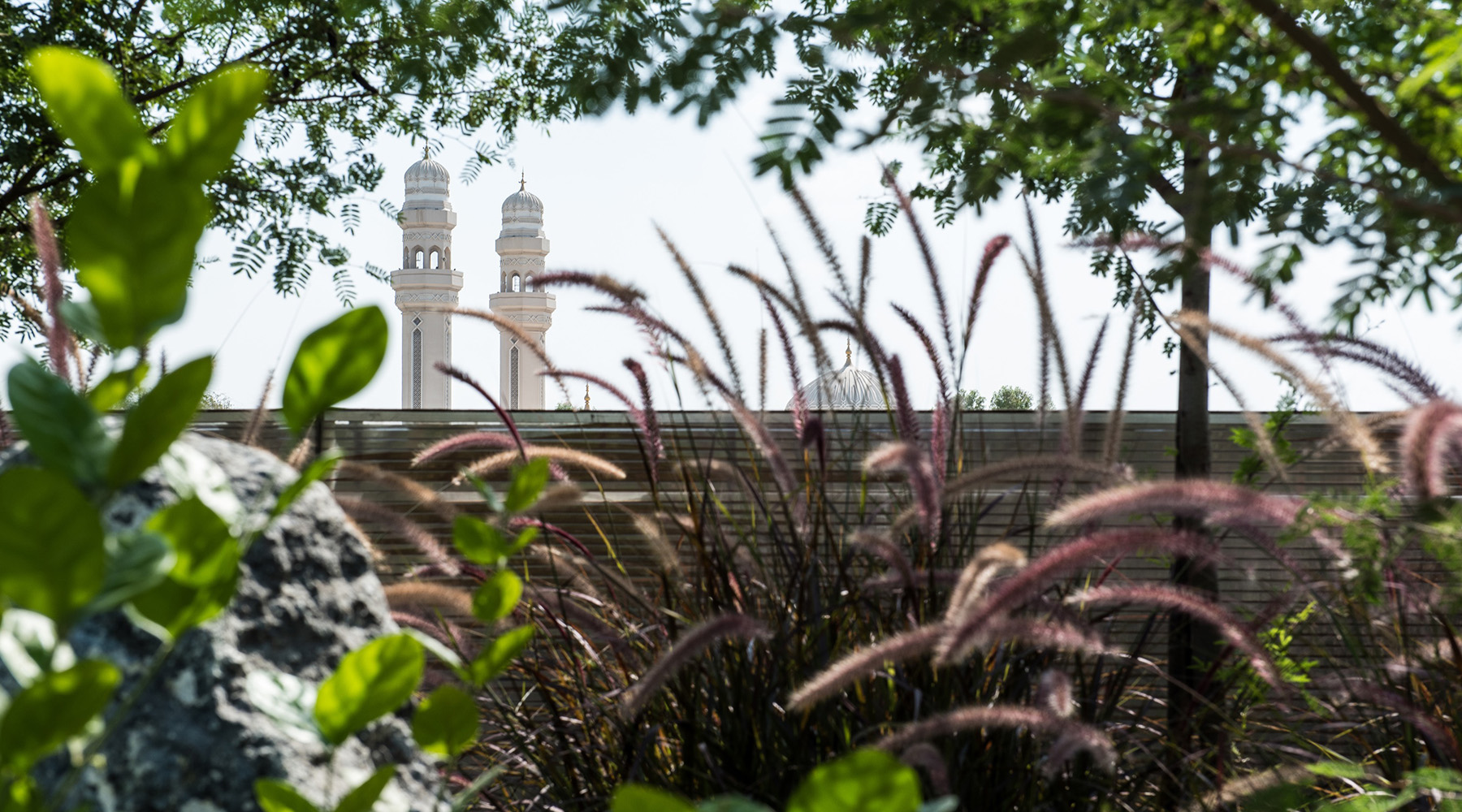The existing park was home to a number of existing mature Ghaf trees and referenced traditional Japanese rock garden; a wall-enclosed garden with carefully arranged rocks, water features, and gravel to represent water ripples. This inspiration was combined with patterns, colors and textures from the local Emirati context to create the new Tashkeel Zen Garden.
The design centers on the natural elements of earth, fire, wind and water, evoking the concept of harmony, space, reflection, and the human self. The textures of sand grains, wooden boards, plant leaves and stones reflect each material’s natural characteristics. The garden landscape includes different varieties, textures and size of desert vegetation suitable for Dubai’s warm climate, complementing each other in their composition. There is a sense of timelessness imbued in the design concept to enhance and compliment the artistic functions of the Tashkeel center. The elements in the Garden are displayed in their essential shapes and forms: dunes, grasses, trees and stones reflect their natural state.
Outlining the garden and identifying from its surroundings is a local stone wall from handpicked stones from Ras Al Khaima’s mountains, matched with sand-filled back-lit multi-polycarbonate “windows” in the walls, breaking down its rigidity. A fluid circulation route offers the visitors a transition through the various natural spaces, navigating via radial paths to reach the five main functional zones. The centerpiece is a sunken seating area, created from cast-in situ polished concrete and layered with purple cushions to match the hues of local plants and includes a central water feature which trickles on Hatta grey stones, with water portraying purity and reflectiveness.

